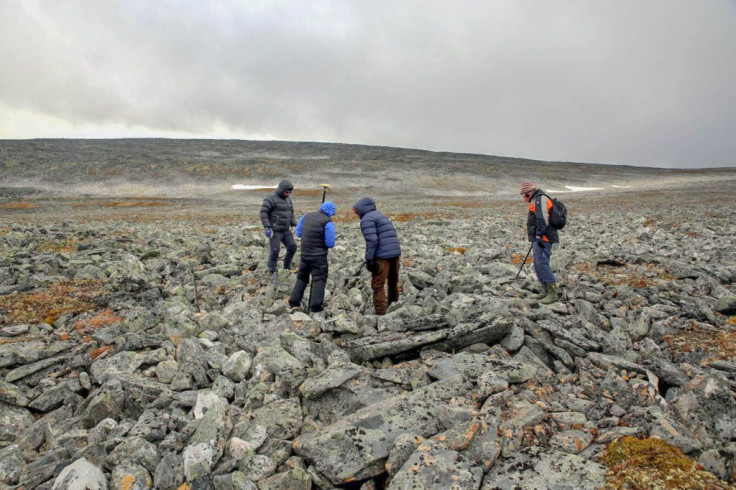1,000-Year-Old Viking Sword Discovered In Norwegian Mountains

A reindeer hunter in the mountains of southern Norway stumbled upon a Viking sword that has survived exposure to the elements for more than 1,000 years.
Einar Åmbakk found the sword because half of its blade was sticking up between stones, according to the council of Oppland County, where the hunter made his discovery. “He had seen the blade and pulled it out,” Lars Pilø, an archaeologist for the Oppland County Council, said in a post on the county’s website for its Glacier Archaeology Program, called Secrets of the Ice. “Only then did he understand that he had found a sword.”
Officials have dated the sword to between 850 AD and 950 AD.
After Åmbakk reported his find, the archaeologists and others returned to the exact location with the help of geographical information stored in photos the hunter had taken of himself holding the sword. They swept the area with a metal detector but did not find any other artifacts at the site, which is more than 5,000 feet above sea level and covered in loose stones, known as scree. According to Pilø, the sword might have come from a lost Viking who died in the mountains.
“The rough scree-covered find spot is not a place where one would walk if traveling through the area, as there is much better terrain for walking not far away,” the archaeologist noted. “This could suggest that the person who left behind the sword was lost, maybe in a snow blizzard. It seems likely that the sword belonged to a Viking who died on the mountain, perhaps from exposure. However, if that is indeed the case, was he traveling in the high mountains with only his sword? It is a bit of a mystery.”
He mentioned the possibility that the Viking died in a different location from where he dropped his sword. If he perished in an icy area, his remains might be preserved. “As it is now, his remains are long gone, and only the sword bears witness to the drama that happened here more than 1,000 years ago.”
The sword could have survived so long because in this mountainous area of Oppland County — which includes the ski town Lillehammer — it would have been covered with snow for most of the year.
The dry conditions and the high-quality iron used to make the sword would have contributed to its longevity.
Fox News reported that the find was made in the Lesja area.
“To my knowledge, a Viking sword has never been found at such a high altitude before,” Pilø told that publication.
According to the archaeologist, iron arrowheads have been found in the mountains in similarly good condition in the past, some of them dating back ever further than the sword.
“It is well preserved without any kind of scratches and bending,” Pilø wrote on the county website about the new find. “Most likely is was still in its original position or had slid somewhat down between the stones.”

One thing that did not survive was its grip at the hilt. The archaeologist said there was probably bone, wood or leather that is now gone.
Although most people associate Viking warriors with the male sex, it’s possible this sword belonged to a woman. A genetic analysis recently proved that the bones found in the late 1800s in the grave of a Viking warrior belonged to a female, despite the fact that experts had assumed she was a man for more than 100 years.
© Copyright IBTimes 2024. All rights reserved.





















